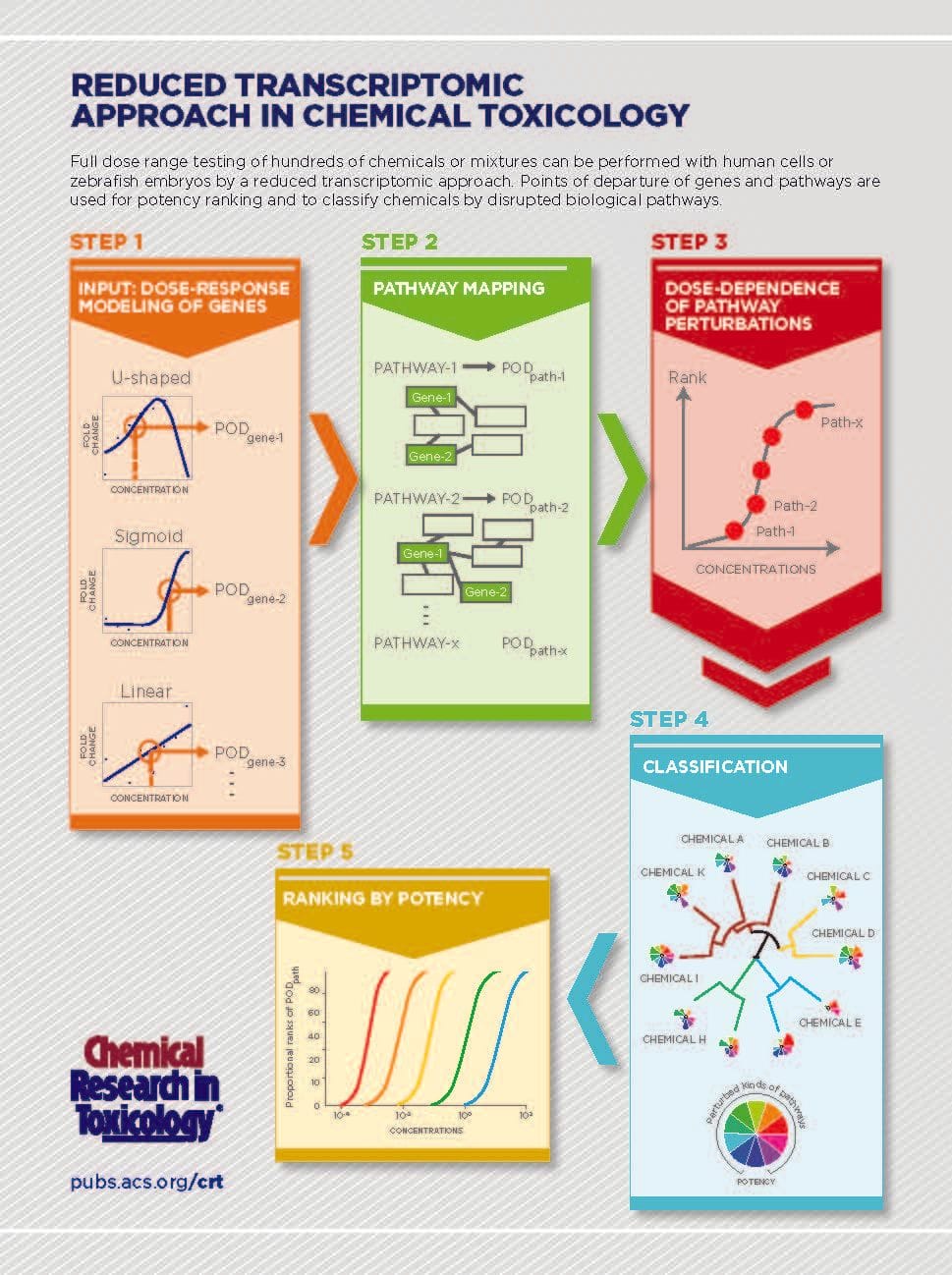A five-step process could offer a method for linking biochemical characterization of toxic responses to information that can impact risk assessment and management practices, writes Professor Jiayin Dai of the Chinese Academy of Sciences in Beijing, China, is an Associate Editor at Chemical Research in Toxicology. In a recent ToxWatch piece in the journal, Dai writes this method […]

A five-step process could offer a method for linking biochemical characterization of toxic responses to information that can impact risk assessment and management practices, writes Professor Jiayin Dai of the Chinese Academy of Sciences in Beijing, China, is an Associate Editor at Chemical Research in Toxicology. In a recent ToxWatch piece in the journal, Dai writes this method presents “a promising and powerful tool for screening hundreds of chemicals or mixtures by potency ranking and to classify chemicals by the spectrum of disrupted biological pathways.”
“The reduced transcriptomic approach allows full dose range testing of hundreds of chemicals or mixtures using human cells or zebrafish embryos,” Jiayin Dai writes in the abstract for “Reduced Transcriptomic Approach for Screening and Prediction of Chemical Toxicity.” “Points of departure of genes and pathways can be used for potency ranking and to classify chemicals by disrupted biological pathways.”
This poster lays out the practical steps from data input on the level of dose-response modeling of genes in cells exposed to chemicals to the possibility of classifying and ranking potency. Click on the image below to download a high-quality PDF of the poster, suitable for printing.

Chemical Research in Toxicology has a new article type in 2018: ToxWatch, which pairs a single large, eye-catching graphic with short, accessible text to explore current issues in toxicology.
Chemical Research in Toxicology aims to serve the diverse, global research community with ToxWatch, just as it does in every article it publishes. To date, the journal has published ToxWatch from the U.S., Europe, and Asia. The journal welcomes ToxWatch contributions from all parts of the world.